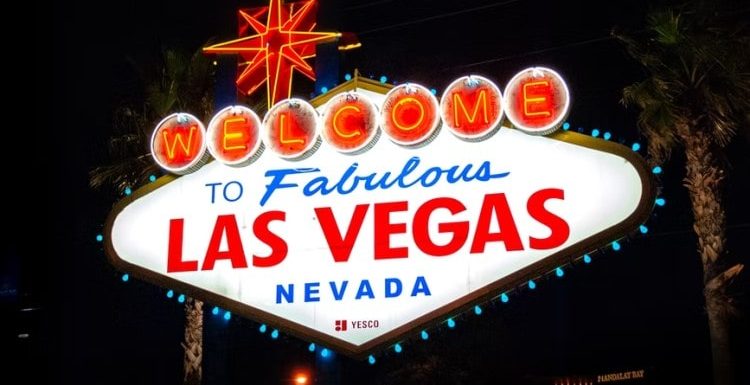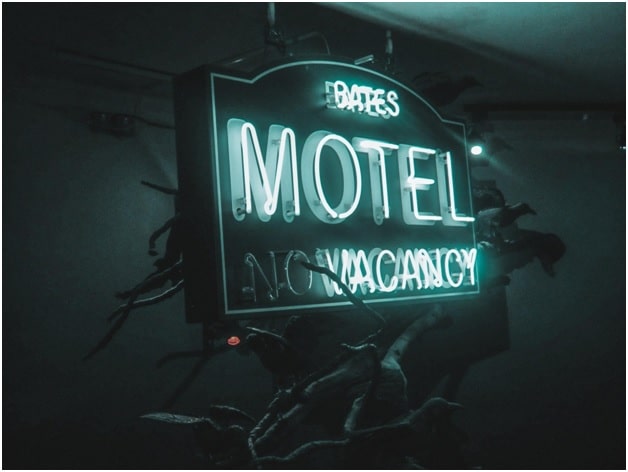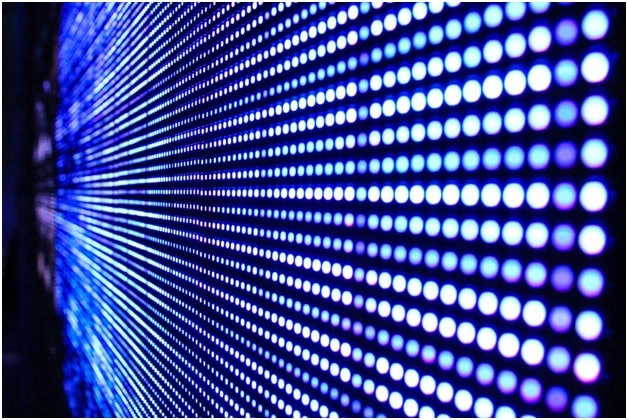
The neon sign. It’s a part of US history. From the friendly “Welcome to Las Vegas” to the not-so-friendly “Bates Motel,” there’s no shortage of images that get conjured up at their mention. But in today’s world, do neon signs make sense? Is there a more eco- and consumer-friendly option out there that achieves the same effect?
In short, yes! LED neon signs give you the look of the old with the efficiency and price of the new. Read on to learn about how these signs work and how to choose the right light for your project.
What is A Neon Sign, Anyway?

Neon signs get their name from the type of gas they use to produce light. Essentially, they’re just glass tubes filled with inert gas. When excited using electricity, neon gas glows the all-too-familiar neon orange. But not all “neon” signs actually contain neon. Other inert gasses can be used to change the color of the light emitted from them. And sometimes, a combination of gasses, impurities in the tubes, or coatings on the glass are used to create a specific color. In fact, soon after their invention, you could get neon signs in just about any color you liked, from the traditional reddish-orange to blues, pinks, greens, and yellows.
Neon signs have a distinctive glow that radiates outward from the light tube in all directions. The light tends to cut through fog pretty well. And that makes them extremely popular with businesses, especially those operating at night. But they do have their drawbacks.
For example, once the tube is filled with gas, it can’t easily be changed. That means you’re stuck with whatever color you start with. Also, the lights tend to fade over time, leaving them less vibrant than when they were new. While they last a pretty long time, they don’t last forever, and they’re expensive to replace. And they don’t do well when exposed to the elements, making them a poor choice for outdoor signs in the long run.
So, you ask, is there a better option? Why, yes, there is!
LED Neon Lights To The Rescue!
The LED neon light thankfully checks a lot of boxes when it comes to improving on glass neon. But what is LED neon? For that matter, what is an LED?

LEDs, or “Light Emitting Diodes” are a relatively new type of light. Rather than exciting gas or heating a filament, LED’s use electricity run across a semiconductor to produce light. The result is a brighter and more energy-efficient light source than most bulbs on the market today. And while they historically were very expensive, they have been steadily dropping in price. They are now at the point where LED bulbs are not much more expensive than glass light bulbs, and they get less expensive every day.
LED neon signs are simply arrays of LED lights contained on a strip inside a clear casing. The casing is typically made of a lightweight clear material like PVC tubing. Let’s take a look at how LED neon signs compare to glass neon:
Cost
Glass neon signs require skilled artisans to hand blow and bend glass tubing to the shape requested for the signs. It’s a long, difficult process… one that requires expertise. Unlike glass neon, LED neon signs are much easier to manufacture, using far less expensive materials that are crafted in a far more simple process. Because of this, they are frequently about half the cost of a comparable glass neon sign.
Power Consumption
Traditional neon signs require a large amount of power to operate. They are also very dependent on steady, reliable power. This means that any power flicker can cause them to dim or go out altogether. Conversely, LEDs are extremely energy efficient and stable. In fact, LED neon signs require about a tenth the amount of power of a glass neon sign. And they’re not adversely affected by power flickers. They’re better for your wallet and the environment!
Maintenance and Installation
LED neon wins here too. Because of their delicate nature, glass neon signs have to be installed and maintained by an electrician. LED neon signs, however, are plug and play. Anyone who can hang a picture and plug in a cord can install an LED neon sign.
Adjustability and Maintenance
LED neon signs can be easily dimmed and can change colors with the touch of a button. Traditional neon can be dimmed, but it’s not easy. You’re going to need an electrician to do it. And they cannot change colors at all without breaking the seal and replacing the gas — a costly and time consuming project.
Safety
Neon signs are made of heavy, hand blown glass, and contain small amounts of mercury, a toxic gas. They also require high voltage. The combination of toxic gas and breakable glass mean they are a safety risk. LED neon signs are extremely lightweight and made of shatter-proof PVC. They are far less likely to break, and if they do, there is little safety concern. Even before breaking, traditional neon signs are also hot to the touch and can easily cause burns. On the other hand, LED neon signs don’t get hot, and can be touched while in operation.
Noise
You may not think of noise when you think of lighting, but glass neon signs emit a buzzing sound that can be quite annoying. LED neon signs make no noise at all.
Useability
Traditional neon signs are limited in their use. They cannot be used in many outdoor environments, and they are not portable. However, LED neon signs can be used in any type of weather, and are so light that you could pack one in your luggage! They’re also far easier to hang than glass neon signs. Plus, because LED neons take up less space, they’re perfect for smaller areas where you don’t want to risk knocking a glass neon sign off the wall.
Longevity
This is the one area where glass neon signs may tie with LED signs. Traditional neon can last an exceptionally long time, possibly as long as 6 years. LED neon signs typically last about four years. However, that’s not the whole story. Glass neon dims over time. So even though they still technically work at 50,000 hours or more, they may not provide the brightness you’re looking for. Plus, with the additional costs associated with glass neon, the LED neon sign may still be the way to go.
Brightness
LED neon lights shine brighter and retain their vibrancy for far longer than traditional neon signs do. If you want a bright outdoor sign, they are definitely the way to go. And even if you need dimmer light, the built-in dimming feature most LED neon signs have make them the obvious choice for just about all neon lighting needs.

So Are There Any Benefits To Traditional Neon Signs?
With all of the benefits of LED neon signs, it’s hard to imagine a scenario in which you’d want to purchase a glass neon sign. But glass neon may be the way to go if you want that truly “old school” experience. LED neon signs are pretty close to the original, but they still have a more modern look as opposed to the glass neon sign. So if you’re going old school with your decor and you can afford the additional expenses and risks associated with glass neon, they may be the way to go.
The Verdict: LED for the win!
There you have it. LED neon signs are less expensive, more energy efficient, easier to install, more versatile, and safer than glass glass neon signs. While nothing will replace that vintage neon look and feel, LED neon signs come pretty close. And their advantages make them the clear winner in virtually every situation.
